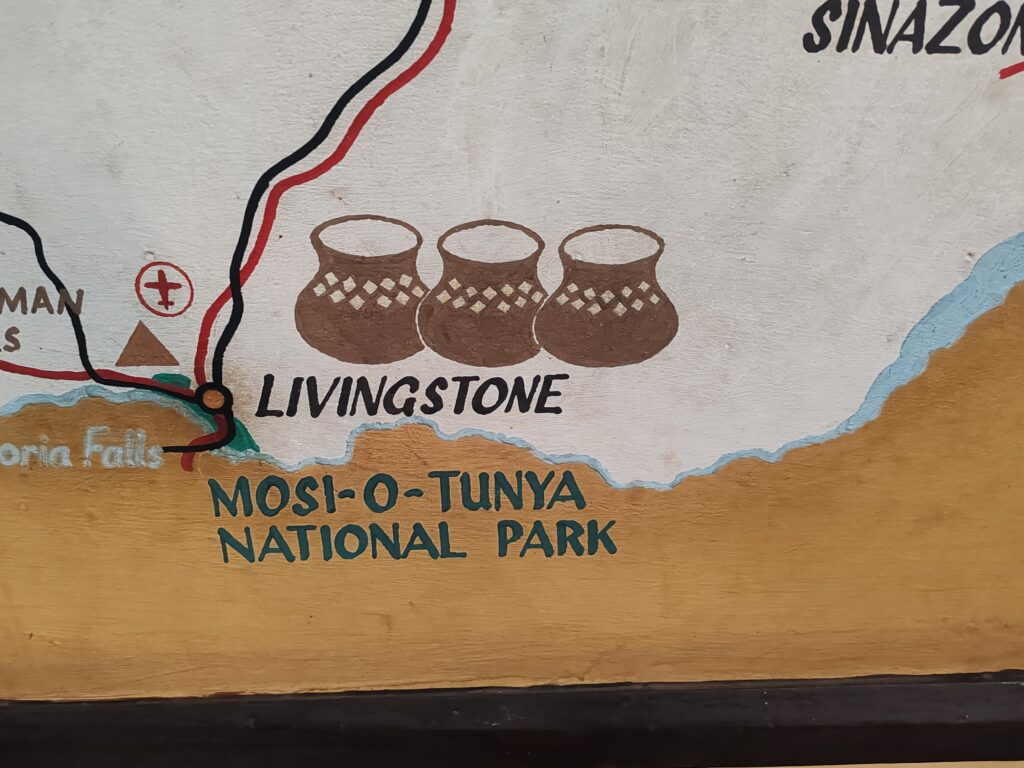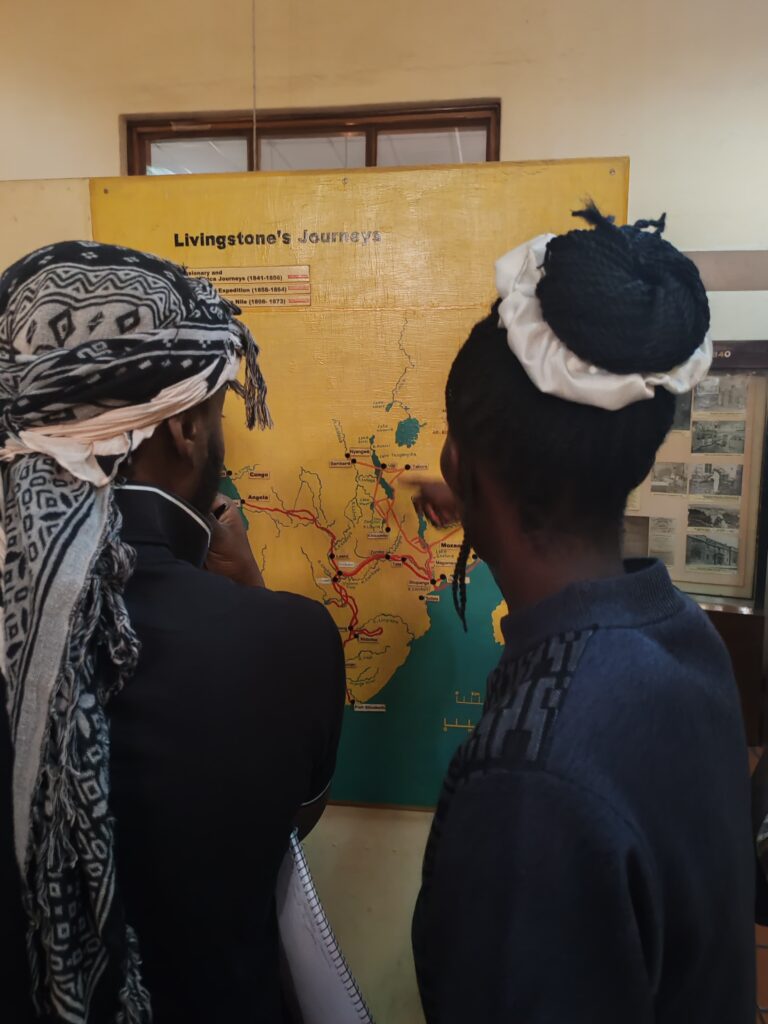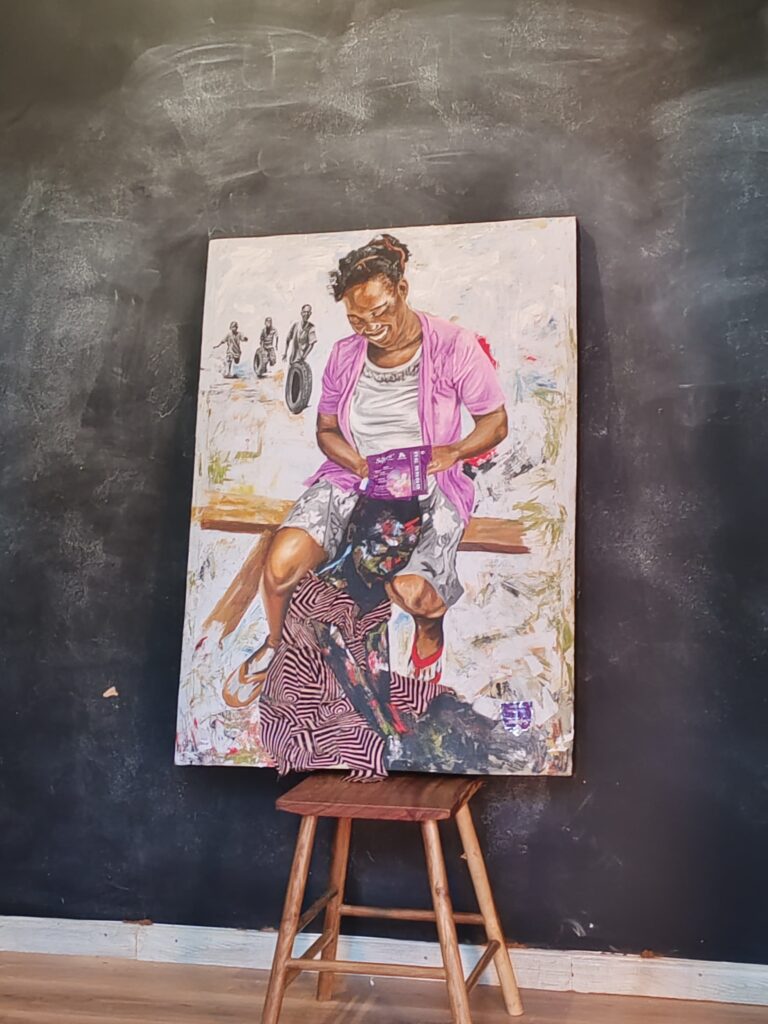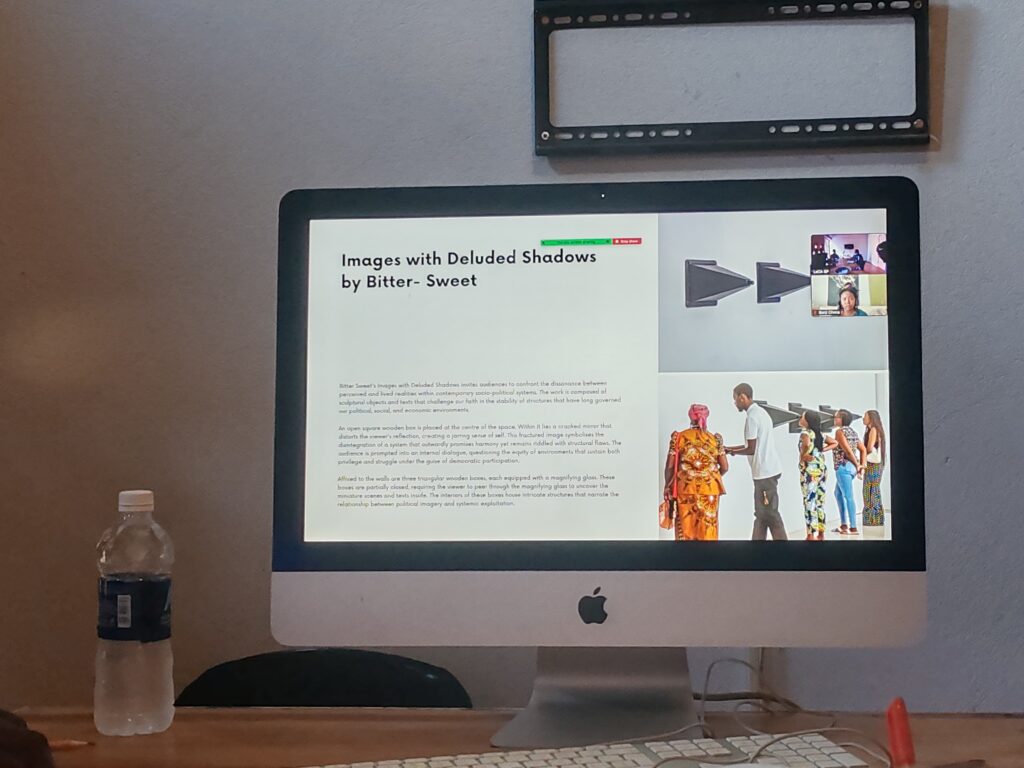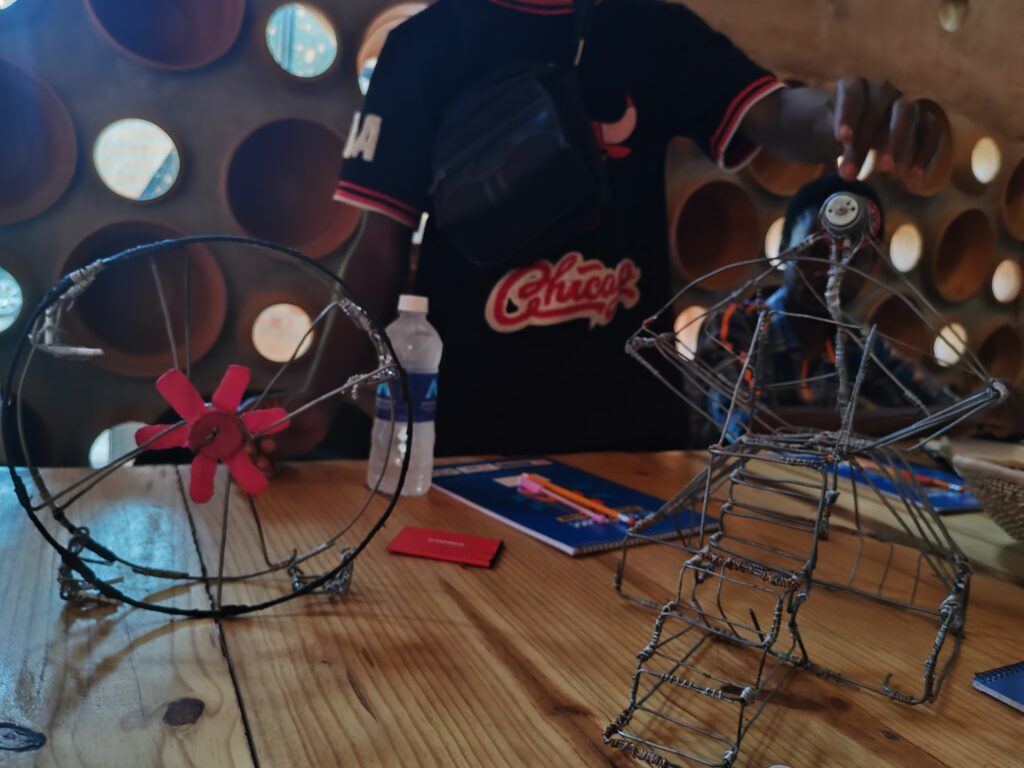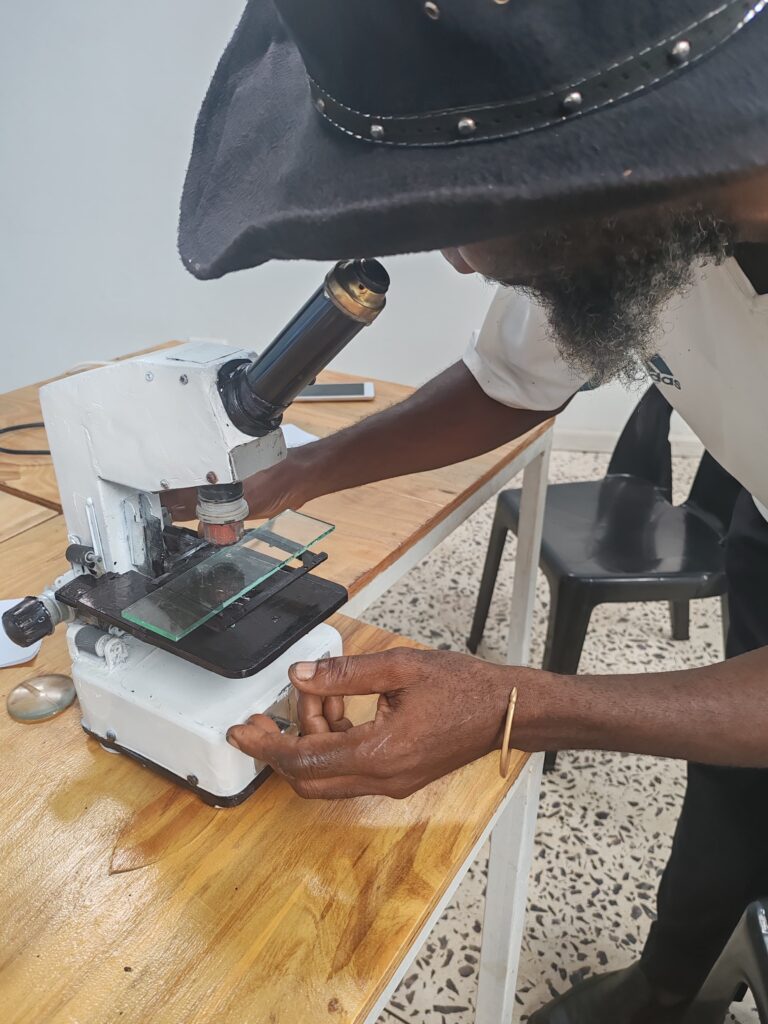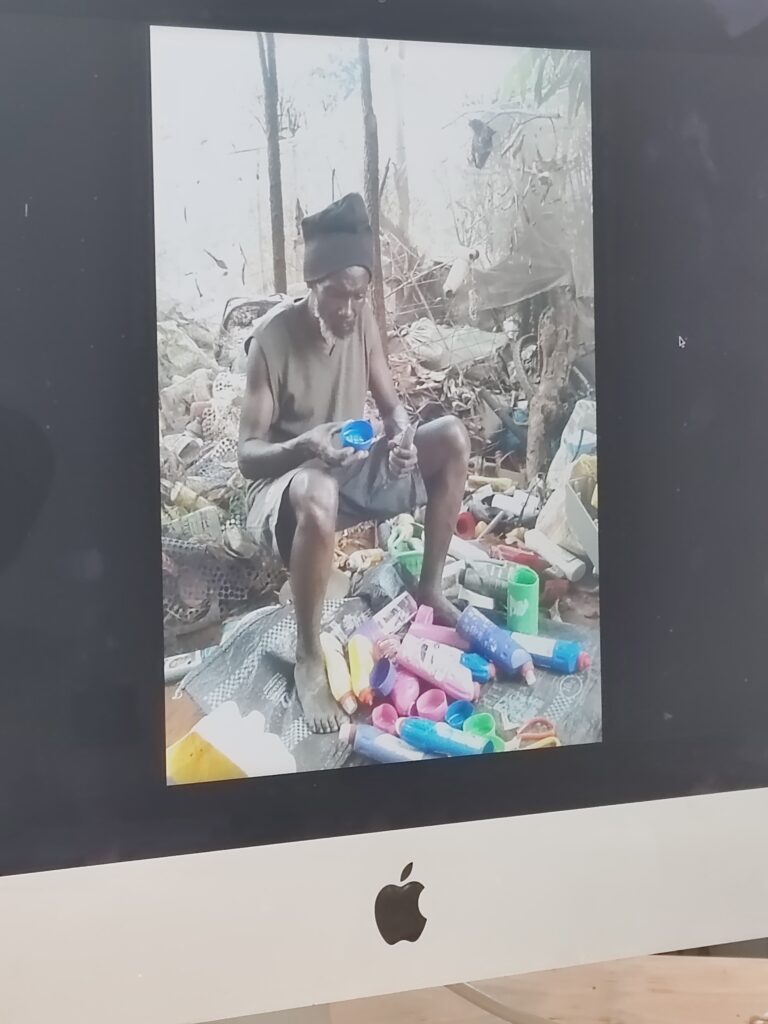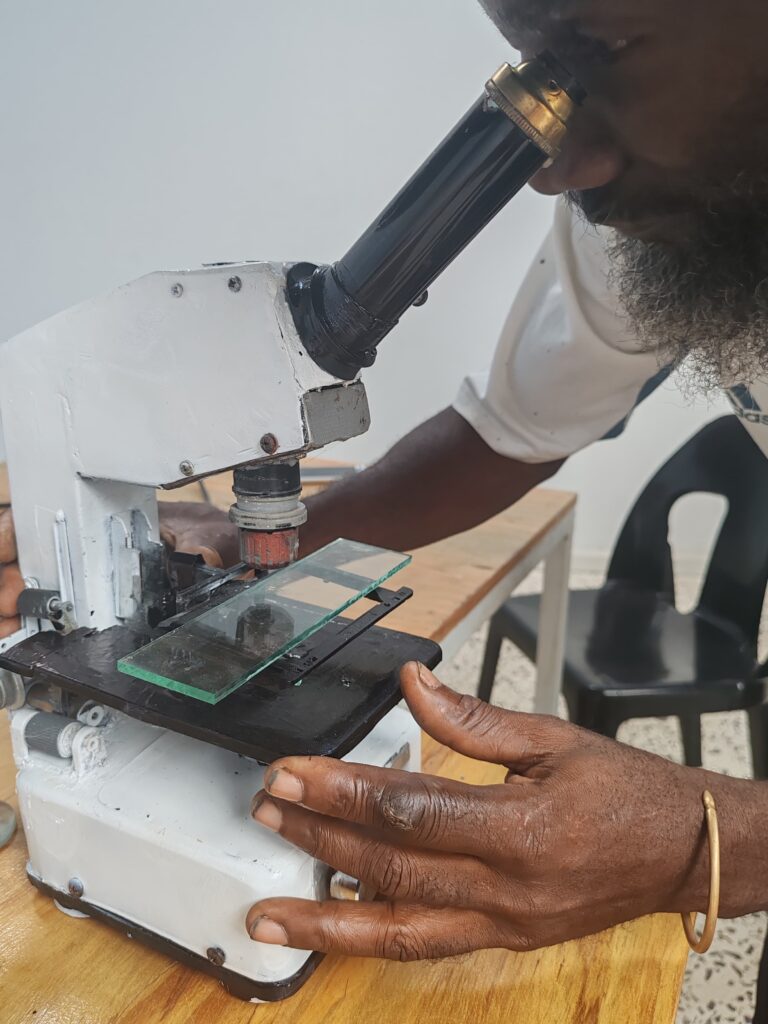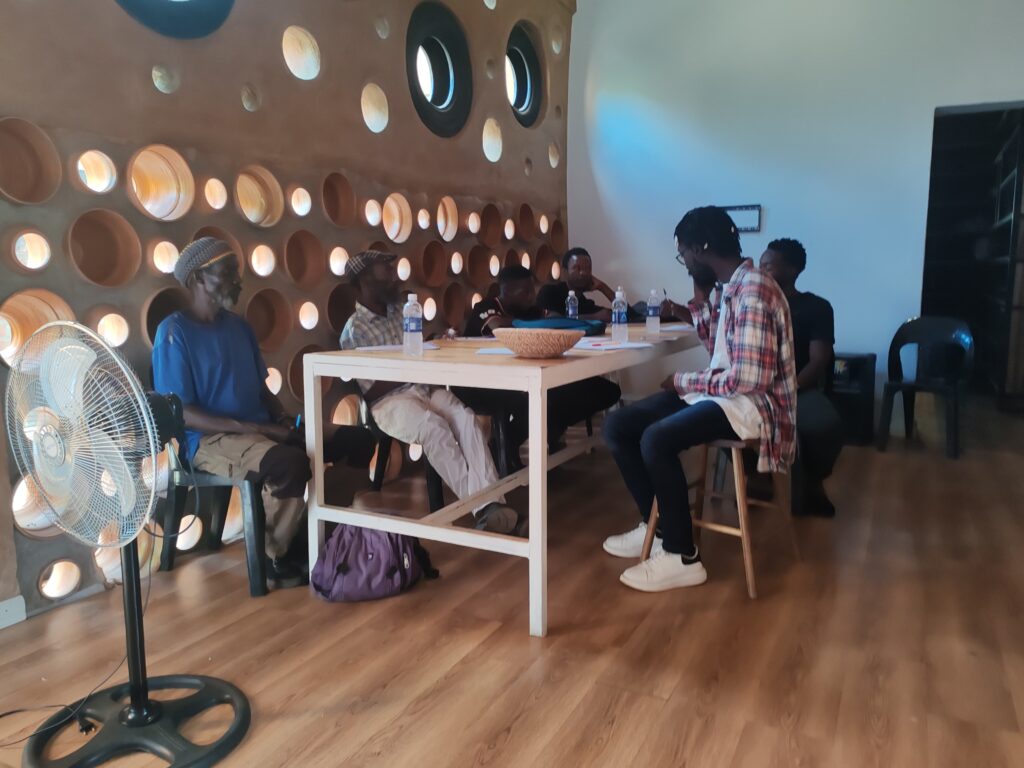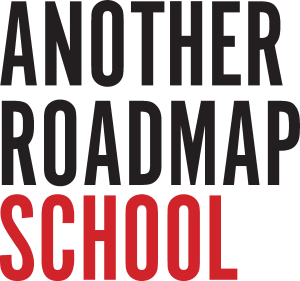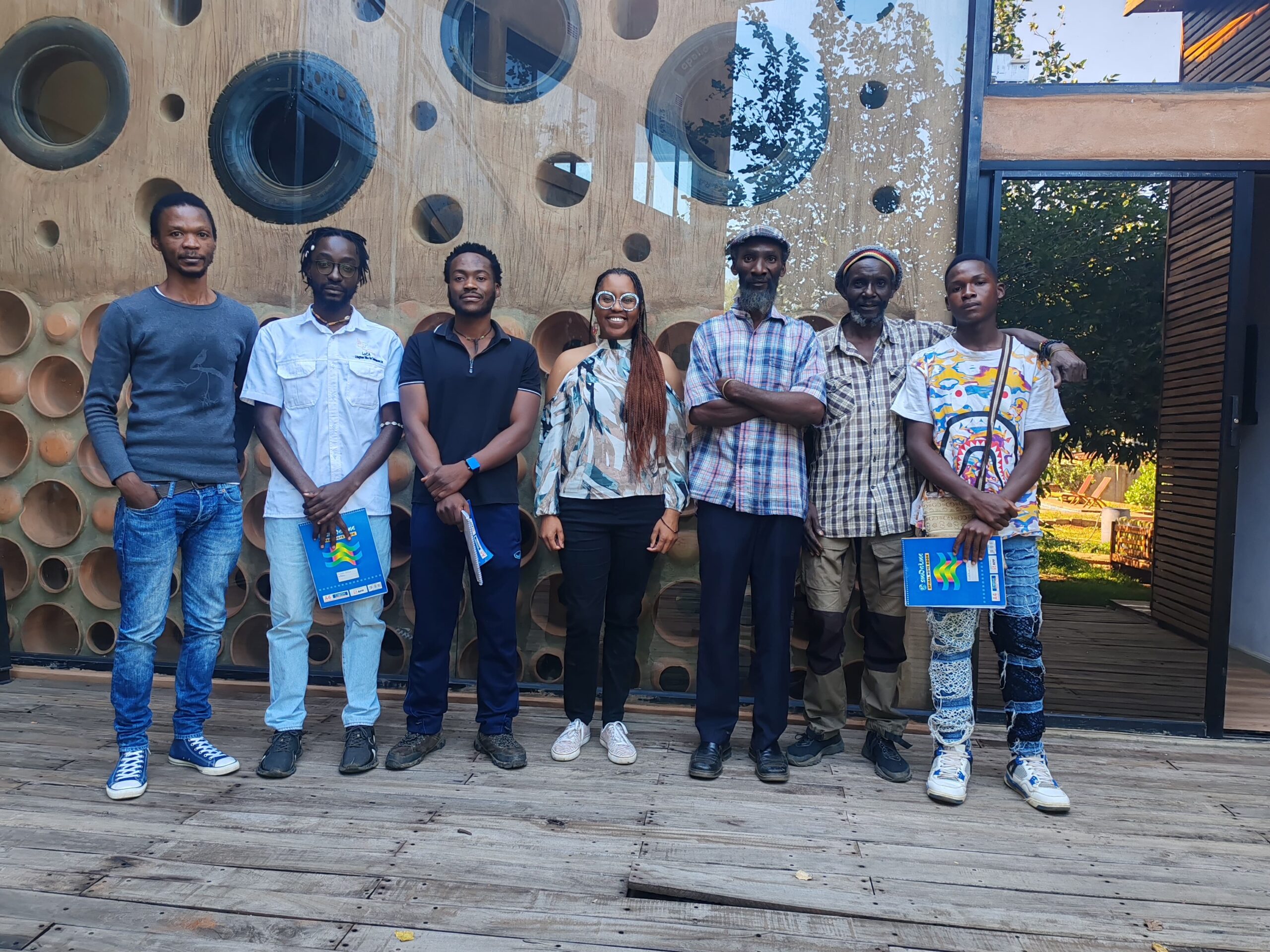Curatorial workshop by Puleng Plessie of the Johannesburg Working Group in collaboration with the Maseru Working Group.
10-15 May, 2025 Livingstone Office for Contemporary Art (LoCA, Zambia
Programme Overview
The u/Kulima Kreatives workshop took place over five days at the Livingstone Office for Contemporary Art (LoCA) in Zambia. Rooted in indigenous knowledge systems and inspired by the concept of kulima, a word found across Bemba, Nyanja, and isiZulu which means to cultivate, to nurture, and to prepare the ground, the workshop was an invitation for artists to reflect on their practice as a living process of growth. While many art programmes speak of “planting seeds,” u/Kulima Kreatives recognised that the participating artists had already planted their seeds through the work they are doing. This programme, then, was about supporting them in the continuous acts of watering, tending, protecting, and eventually harvesting their creative ideas.
Over the course of the week, we shared meals, ideas, histories, and futures. While the original plan for the programme included a second phase, an exhibition curated by the participants, we intentionally focused all our time and energy on the workshop process. This decision allowed for a much deeper, slower engagement with each artist’s practice.

Workshop Experience
Day 1: The Seed – The Artist
The first day, titled The Seed – The Artist, was about grounding ourselves and introducing our practices. We began by sharing the meanings behind our names. This opening activity revealed just how connected our names were to land, rain, animals, transition, and growth all resonating deeply with the theme of cultivation. I shared that my name, Puleng, means rain, and how it always seems to rain when I arrive somewhere I’m meant to be. The next day, it rained gently in Livingstone.
We used this day to explore the personal and artistic biographies of each participant, including CVs, portfolios, and digital presence. We discussed how our stories, materials, and artistic journeys shape who we are as creatives. Each participant created a visual practice map, outlining their themes, values, and materials. The methodology for the day centred around critical self-inquiry, with key readings including The Possibilities of Research: The Promise of Practice by Graeme Sullivan and Min Gu. We were joined by five participants, including one online member, and each artist’s introduction revealed a rich tapestry of ideas from sculptural storytelling using wood, to mothering and womanhood through mixed media, to robotics and movement, and socio-political commentary using found objects.
Day 2: Planted with Others - Collaboration
Day two, Planted with Others, focused on collaboration and curatorial thinking. Two new participants joined us, and we opened the day by allowing time for everyone to share reflections from the previous day. It became clear that we needed to allow space for these reflections each morning, which meant rethinking how we structured our time. We looked at how artworks speak in dialogue with each other, and how exhibitions can shape the meaning of those dialogues. Participants discussed their collaborative experiences and explored what a group exhibition at LoCA might look like in theory.
One of the new participants shared work centred on matriarchal memory and sound archives, using leaves and printmaking as a way of reclaiming women’s voices from patriarchal narratives. Another artist used mirrors, text, and hand-built magnifying glasses to create interactive pieces critiquing political hypocrisy and neo-colonial economic exploitation. The methodology we drew on that day was reflexivity, the practice of examining one’s position and relationships within the creative process.
Day 3: Preparing the Soil – Understanding the Ground
On day three, Preparing the Soil, we turned our attention to historical, political, and institutional contexts that shape artistic practice. We began with a presentation I facilitated on the history of museums, drawing from Tony Bennett’s The Birth of the Museum, as well as other texts that challenged the ways museums create and control narratives. We discussed the politics of silence, repatriation, and storytelling. This was important to help us prepare for our visit to the Livingstone National Museum, where we encountered colonial representations of Dr David Livingstone and the marginalisation of local knowledge systems. We reflected on the symbolic power of architecture and the performative nature of exhibitions.
Day 4: Curating the Ground – Positioning Your Practice (Livingstone National Museum Visit)
The museum visit gave rise to deep questions about what knowledge is valued in cultural institutions. For instance, while the “rites of passage” exhibit was one of the smallest in the museum, the display dedicated to David Livingstone was expansive, almost shrine-like. It walked visitors through his family tree, expeditions, and burial with far more care and detail than anything dedicated to indigenous culture. In contrast, we also experienced a moving exhibition celebrating Zambia’s 60-year mining history, which opened conversations around the shared legacies of extraction and labour in both Zambia and South Africa.
Back in the workshop, we explored these themes in small group sessions. Participants were asked to reflect on their practice and propose a collaborative project. They were encouraged to imagine the audience, location, and intention of their proposals. These projects laid the groundwork for speculative curatorial thinking and made space for peer-to-peer learning.
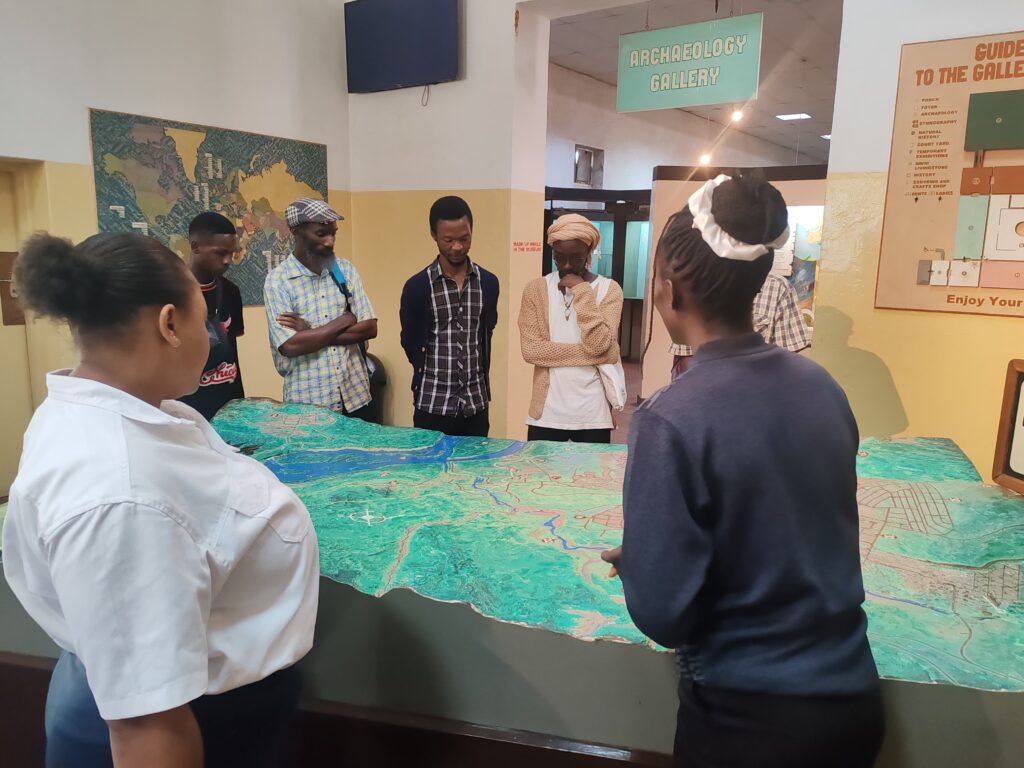
Day 5: Harvest and Share - Showcase and Reflection
Our final day, Harvest and Share – Showcase & Reflection, brought everything together in a meaningful and celebratory way. This session focused on positioning our practices through writing, dialogue, and critical feedback. Participants worked collaboratively to develop curatorial statements and exhibition proposals that reflected the ideas, conversations, and fieldwork explored throughout the week. The tone was constructive and generous, as each artist took part in peer critique, refining how they speak about their work and deepening their awareness of its broader impact. The session created a space of clarity, where previously abstract or intuitive ideas began to take clearer form.In the afternoon, we shifted into a moment of reflection and celebration. Participants pitched their future plans, discussed what they were taking with them from the u/Kulima Kreatives experience, and spoke about how the process had shifted their approach to artistic and curatorial research.
Participant Engagement and Outcomes
In total, the workshop brought together eight participants from various creative disciplines including sculptors, painters, mixed-media artists, writers, and a student working in kinetic and robotic sculpture. This diversity of material and age enriched the conversations and added complexity to how we engaged with the themes of practice, process, and purpose.
The thematic concerns of the participants’ work were wide-ranging and deeply relevant. Some artists explored womanhood and motherhood, using mixed media to honour female experiences and histories. Others were deeply invested in ecological awareness and recycling, using found materials to speak about waste, renewal, and care. Postcolonial critique and political satire emerged in works that examined socio-political themes, governance, and the commodification of land and people. Indigenous oral traditions and rites of passage featured prominently to consider public programmes, with several artists creating work that spoke to the transmission of knowledge from elders to youth. Other participants explored repatriation and archival research, using art as a tool for memory and reclamation. A few participants blurred the lines between art and science, creating hand-built telescopes and magnifying devices as part of their sculptural processes.
What stood out most was the honesty and generosity of each artist’s contribution. We saw found-object sculptures symbolising social change; text-based installations that held up a mirror to Zambian politics; sound archives reclaiming silenced voices; and collaborative proposals for future exhibitions grounded in place and community. It was clear that this was not simply a technical workshop, it was a space of healing, confrontation, and deep artistic inquiry.
